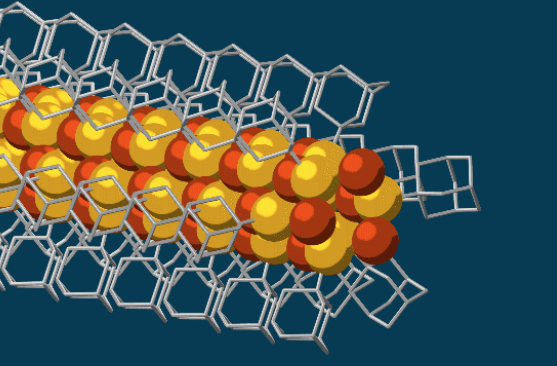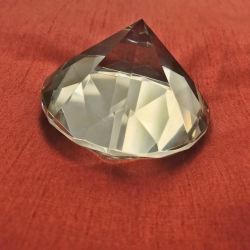Representing a cross between brilliant engineering and maximum product efficiency, in which the smallest particles of a valuable substance are put to extraordinary use, a team of scientists has created electrical wiring from the absolute smallest pieces of diamonds.
How small, you ask?
The researchers used material called "diamondoids" – microscopic dust if you will, called "cages," that contain hydrogen and just 10 carbon atoms.
The scientific team is part of the U.S. Department of Energy's National Accelerator Laboratory, working at Stanford University in California. And we're not talking about wires that connect the cable box to your television; these are futuristic superconductors that could potentially transmit electricity with 100 percent efficiency – meaning no loss during transmission from point A to point B.
And if that's not remarkable enough, these diamond particles, amazingly, just fall into place.
 "What we have shown here is that we can make tiny, conductive wires of the smallest possible size that essentially assemble themselves," said Stanford's Hao Yan, the study's lead author, in a statement released this week. (A depiction of these diamondoid cages appears at right, courtesy of the National Accelerator Laboratory.) "The process is a simple, one-pot synthesis. You dump the ingredients together and you can get results in half an hour. It's almost as if the diamondoids know where they want to go."
"What we have shown here is that we can make tiny, conductive wires of the smallest possible size that essentially assemble themselves," said Stanford's Hao Yan, the study's lead author, in a statement released this week. (A depiction of these diamondoid cages appears at right, courtesy of the National Accelerator Laboratory.) "The process is a simple, one-pot synthesis. You dump the ingredients together and you can get results in half an hour. It's almost as if the diamondoids know where they want to go."
On an atomic level, these diamond bits are attracted to each other, meaning that they "clump together into sugar-like crystals," the statement reads, "which is the only reason you can see them with the naked eye." And they possess efficient electronic properties, which is why they were studied in this case.
The study, topped with a title that just rolls off the tongue – "Hybrid metal–organic chalcogenide nanowires with electrically conductive inorganic core through diamondoid-directed assembly" – was recently published in the journal Nature Materials. In it, the researchers report that they've created "three-atom cross-sections, representing the smallest possible nanowires."
Yes, wires that are three atoms wide.
In addition to no-loss electricity transfers, other potential uses for this self-assembling discovery include creating material, including fabrics, that generate electricity and "opto-electronic devices that employ both electricity and light."

